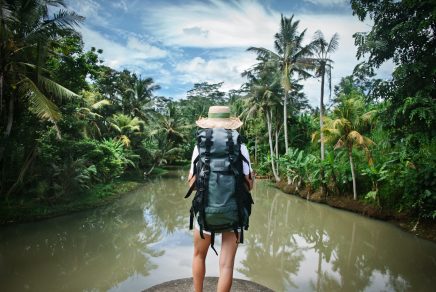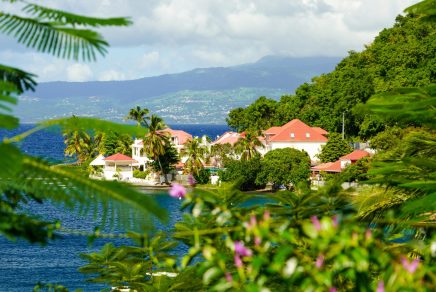Embark on a journey to these Guadeloupe islands and discover a world beyond the usual tourist paths. From hidden beaches to unspoiled natural beauty, these three lesser-known islands offer a chance to travel differently, immersing you in unique experiences and breathtaking landscapes.
Whether you’re admiring the world-class bay in Les Saintes, snorkeling in La Désirade, or rum tasting in Marie-Galante, you’re bound to come back changed, with stories that sparkle brighter than the Caribbean sun. Ready to explore Guadeloupe like never before?
Is Guadeloupe a good island to visit?

Guadeloupe, an enchanting French Overseas Territory, lies amidst the captivating beauty of the Lesser Antilles. Known for its distinctive butterfly shape, the archipelago consists primarily of two main islands of Basse-Terre and Grande-Terre which form the left and right wings of this natural wonder. Basse-Terre, the highest point of the islands, is home to the famous Soufrière volcano and offers breathtaking landscapes, including the Salée river. Part of the European Union, this group of islands sits in the Caribbean Sea and is known for its stunning biodiversity and variety of marine life.
Planning a day or multiday-trip to these paradise islands is truly one of the best things to do in Guadeloupe if you’re looking to really see the destination for what it is.
The most common way to get to and from any of these three Guadeloupe islands is by boat. It’s worth noting that although the service is operated on a regular basis, the frequency varies depending on the dry season. Traveling by boat is a great way to enjoy the beautiful views over the crystal-clear waters and to admire the open sea! On a clear day, you may even be able to see the peaks of neighboring Dominica in the distance…
Where is the island of Guadalupe located in the Caribbean?
Guadeloupe sits in the eastern Caribbean Sea, approximately 600 km north of the South American coast. This French overseas region forms part of the Lesser Antilles archipelago, positioned between Antigua and Barbuda to the north and Dominica to the south.
The archipelago spans roughly 1,628 square kilometers and straddles the boundary where the Caribbean Sea meets the Atlantic Ocean.
Les Saintes

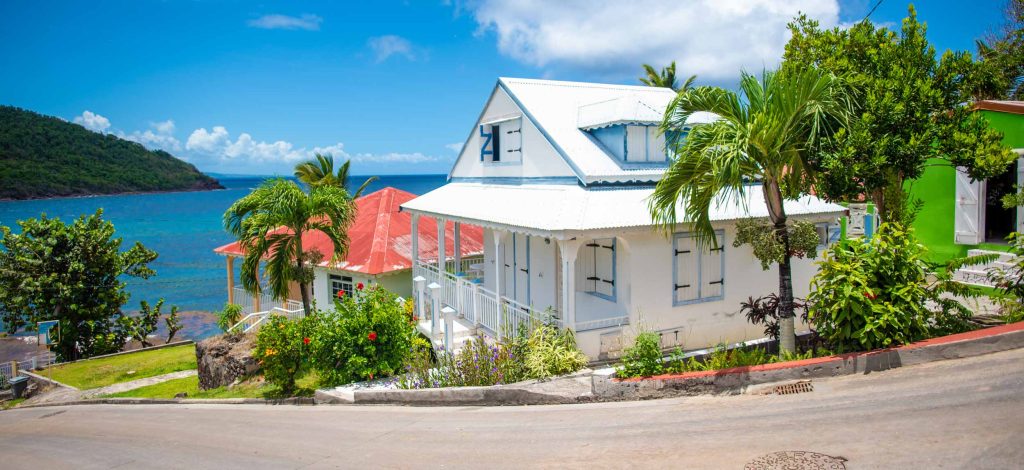
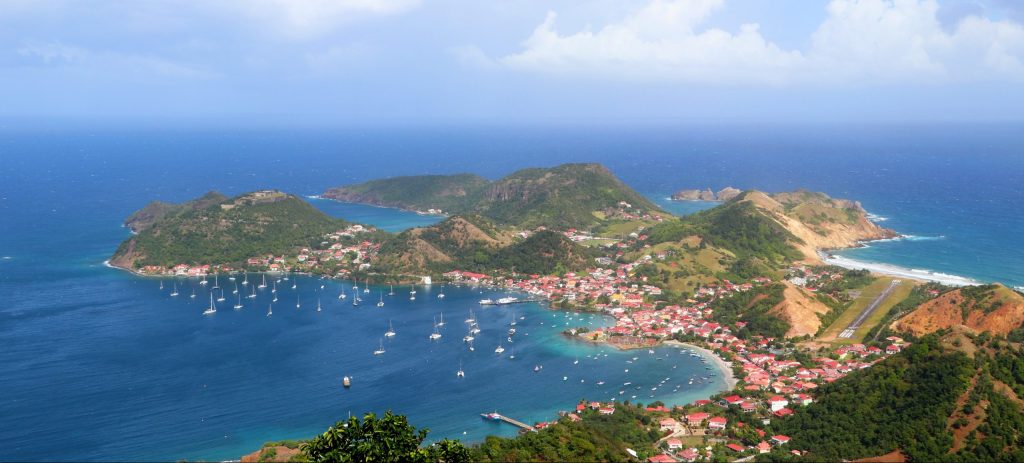
Just 10 kilometers southeast of Basse-Terre, nine islets stand proudly. The two largest rocks are inhabited, while the seven others remain untamed: together they make up Les Saintes, a group of islands discovered and named by Christopher Columbus in 1493. For many, the charm of this archipelago lies in its magnificent landscapes and the contrast between its two centers. Surrounded by the Caribbean Sea, the islands are part of the Guadeloupe archipelago and boast a tropical climate.
Terre-de-Haut
Ah, Terre-de-Haut, the vibrant star of the Les Saintes archipelago. Only 6 kilometers long and 2 kilometers wide, it’s easy to explore on foot if you’re in good shape, or better yet, rent a scooter or bike for the day.
Stroll through its streets and you’ll be enchanted by the quaint beachside restaurants, each telling the story of a rich cultural tapestry. And then there’s the magnificent Bay of Les Saintes, a jewel in the crown of UNESCO’s World’s Most Beautiful Bays. History buff? Visit the well-preserved Fort Napoleon for a glimpse of the area’s historical significance as the “Gibraltar of the Antilles.” The island’s variety of marine life makes it a great spot for snorkeling in the Caribbean Sea, especially during the dry season.
Whether you’re enjoying a ti-punch with scenic views, lounging on the world-class sand beaches, or diving into the crystal-clear waters for a snorkeling adventure, Terre-de-Haut promises experiences that are as delightful as they are memorable!
Terre-de-Bas
Then there’s Terre-de-Bas, the rugged, less-traveled path with just 1000 inhabitants. This tranquil island is a paradise for outdoor enthusiasts, boasting a network of hiking trails that weave through rocky hilltops, offering breathtaking views. The square miles of untouched nature make it ideal for those seeking a quieter experience in the group of islands.
Terre-de-Bas is home to two neighborhoods: Grande-Anse and Petite-Anse, which are linked by a ferry service. Whatever you choose, know that there is very little to do here! Except of course take in the breathtaking views, meet the locals, and learn about the traditional island way of life. The lack of a million sights and landmarks makes it a good opportunity to sit back, relax, and truly appreciate the experience.
How to get to Les Saintes
The main ports for connections to Les Saintes are St-François (via Marie-Galante, roughly 90 minutes) and Trois-Rivières (nonstop and in just 30 minutes) with service to Terre-de-Haut. There are three operators to choose from for the crossing: CTM, Val’Ferry and Karu’Ferry. L’Express des Îles also offers connections to Les Saintes from Pointe-à-Pitre, but only once a week.
It’s worth noting that it’s perfectly possible to make a day trip to Les Saintes without having to stay overnight. It is one of the easiest ways to discover the archipelago of Guadeloupe!
A return ferry ticket costs an average of 40 euros per adult.
La Désirade
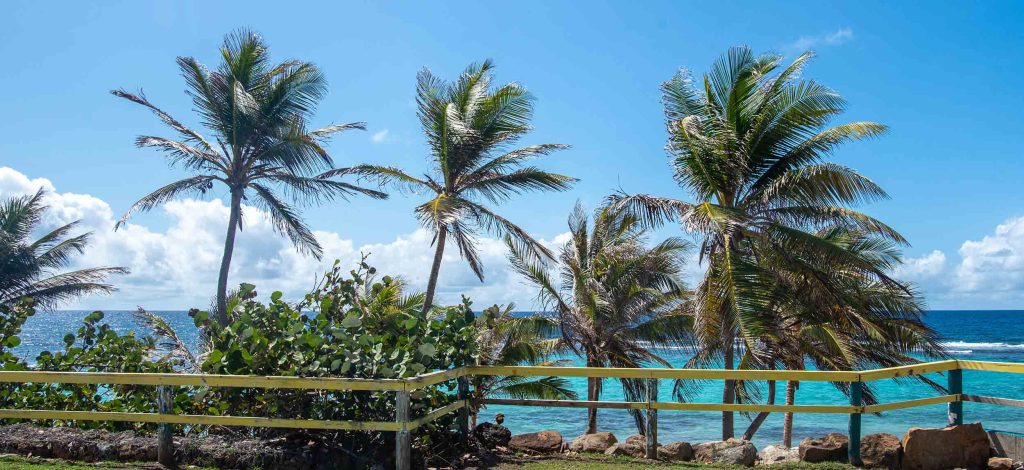

Located northeast of Pointe des Châteaux, just east of Grande-Terre, La Désirade island resembles a mountain whose peaks have been cut off. It’s an elevated atoll with a peak of 275 meters, consisting of an immense, very flat plateau covered by dense forests.
Between the Creole villages where the 1,700 Désiradiens live, wild nature and heavenly beaches, this is the perfect place to be if you’re looking for utter peace and quiet in nature. First, hire a bike or a scooter. Second, plan stops at the Pointe Doublée lighthouse, the ruins of the Leprosarium, visit the colorful beach huts in Beauséjour, and admire the view from the Notre Dame du Calvaire chapel.
And because you’re inevitably going to ask, here are the best beaches in La Désirade:
- Plage FanFan
- Plage Fifi
- Plage du Souffleur
- Plage de Petite-Rivière
Whether you enjoy kitesurfing, windsurfing or scuba diving, with such easy access to the sea, water sports are a must in this area.
How to get to La Désirade
The only way to get to La Désirade is by Comadile ferry from the port of Saint-François. The ferry ride takes about 45 minutes and offers a scenic (although quite choppy) route to the island. It’s advisable to check the ferry schedules in advance as they can vary seasonally and are subject to weather conditions.
There are plenty of charming, locally owned and operated accommodations on La Désirade. This makes it easy to stay for a few days and really take the time to explore this stunning island.
Marie-Galante
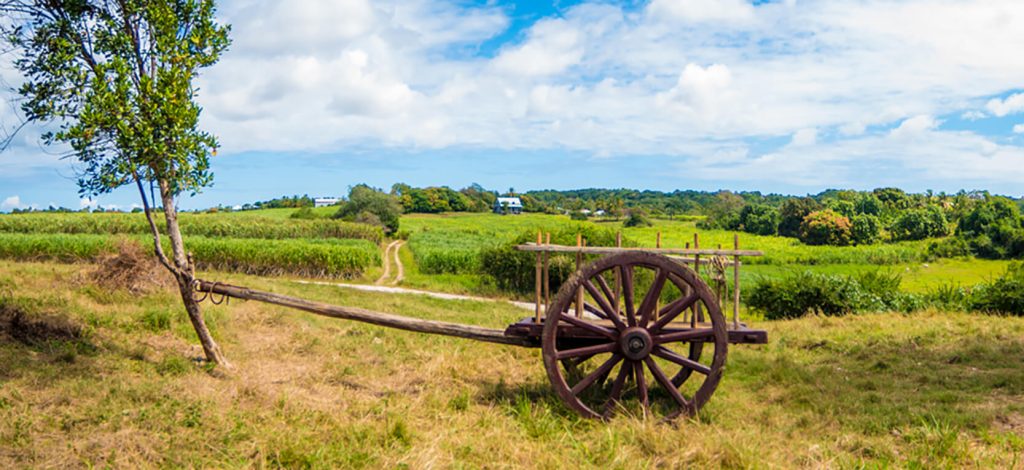
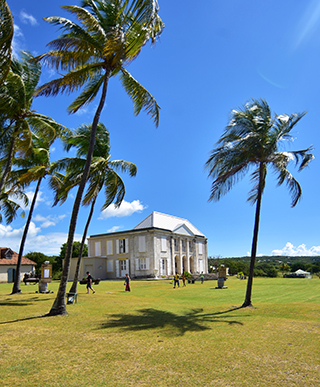
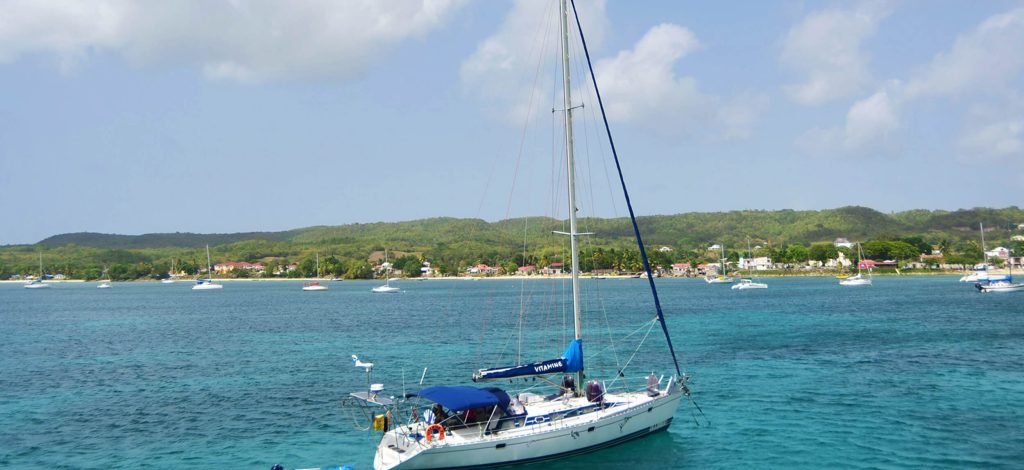
Welcome to “the big galette”, as it’s called here because of its round shape. Here, every turn reveals one of its ten stunning beaches, where the azure waves kiss the shore.
When it comes to beaches, Marie Galante is unsurpassed. Endless stretches of fine white sand rub shoulders with turquoise lagoons and coral reefs… a true Caribbean postcard! Spanning 240 square miles, this round island also offers vast sugarcane fields, rich history, and a relaxed way of life that’s well preserved.
This round island offers a tapestry of experiences. 10 breathtaking beaches, art museums that tell stories through vibrant colors, and centuries-old sugarcane plantations that stand as silent storytellers of a bygone era. Vast fields of sugar cane occupy most of the land. Three distilleries still operate on the island. It’s not uncommon to see ox carts pulling alongside the distilleries. These strange carts are still in use to transport curious tourists looking for a ride (though not much in the way of comfort!).
Interested in truly diving in the traditional Antilles way of life and learn more about their rich heritage? Marie-Galante is then one of the best Guadeloupe islands to discover.
How to get to Marie-Galante
From Pointe-à-Pitre, three companies will take you to Marie-Galante: Express des îles, Jeans for Freedom and Val Ferry. From Saint-François, a daily shuttle service operated by Comadile leaves the port at 7:15 am.
It’s easy to plan a multi-day stay here! That’s thanks to the many local accommodation options, from homestays to large, fully staffed villas. There’s something to suit every taste and budget!
Îlets de la Petite-Terre
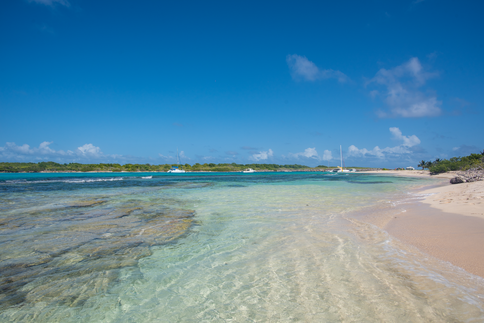
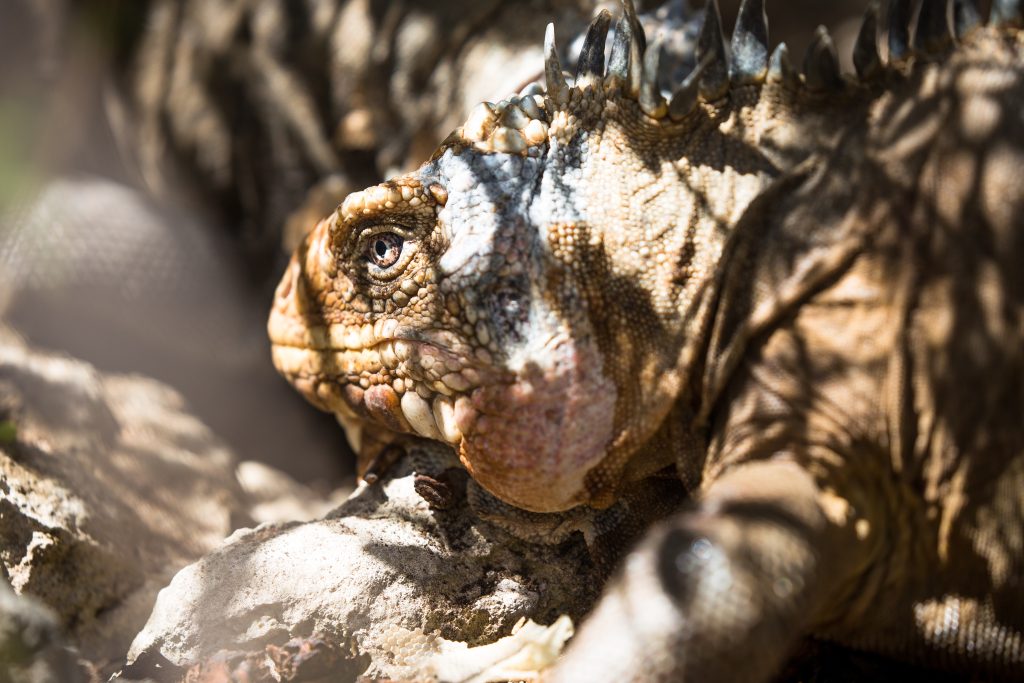
Keen to visit a low-key destination on your Guadeloupe vacation where fauna reigns supreme? Îles de la Petite-Terre, a duo of smaller islands part of the island group, offers an untouched paradise for nature enthusiasts. They are uninhabited and have been declared a nature reserve; only designated reserve rangers are allowed to stay overnight.
These protected nature reserves boast crystal-clear waters in the Caribbean Sea, vibrant coral reefs, and a variety of marine life, making them ideal for snorkeling.. In the lagoon, turtles, all kinds of colorful fish, dozens of bird species, and magnificent corals are easy to spot. You can also see iguanas, hermit crabs, and majestic agaves. The islands’ unspoiled beaches and lighthouse add to their allure, all within a tropical climate.
How to get to Îlets de la Petite-Terre
Departing from Saint-François, you’ll cast off for a crossing lasting around 1h30. The islands cover a few square miles.
Unlike the previous islands, and due to the protected nature of the island, excursions are organized according to specific programs offered by various tour operators. Most of the excursions include transportation, a guided tour, a small lunch, as well as the rental of fins and masks for snorkeling.
These Guadeloupe islands can only accommodate a limited number of visitors per day, so advance reservations are strongly recommended, especially during the dry season.



